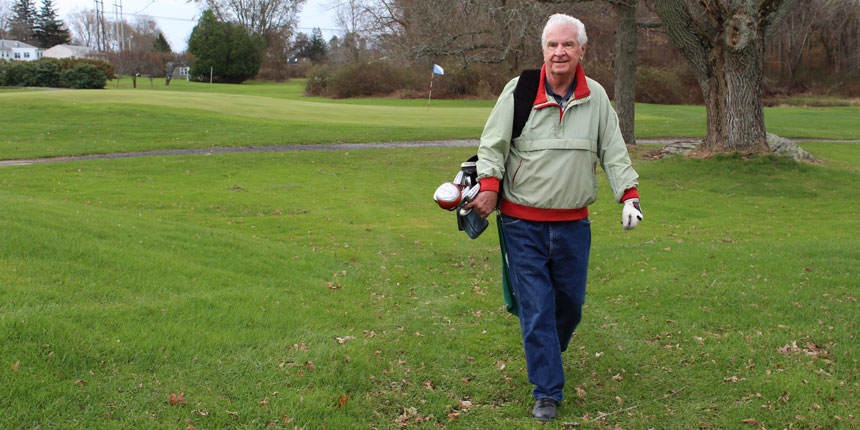Health+
Shake Off Leg Pain

There may be a surprising solution for your tired, achy legs
If you are suffering from tired, achy legs, you may be surprised to learn that the problem might not stem from your muscles or joints. Instead, it could be malfunctioning veins or blocked arteries.
When valves in the veins that bring blood up to your heart malfunction, the blood can collect in the veins or flow back down, causing them to enlarge. These enlarged veins are called varicose veins, and you may experience a feeling of heaviness, pain or discomfort around the vein or throughout your legs. The symptoms tend to increase while standing or sitting for long periods of time and may disrupt sleep.
Conversely, if you experience leg pain mainly when you’re active, it could be due to blocked arteries. These blockages restrict blood flow to your muscles, causing them to tighten and become fatigued.
Feeling the pain
Westport resident Raymond Gagne, 78, suffered from blocked arteries in the legs. “I couldn’t walk for more than two minutes without having to stop and rest because I was in so much pain,” Raymond says. “I eventually stopped being active, giving up bowling and golf. I couldn’t even walk to my mailbox to get my newspaper.”
Addressing pain from blocked arteries in the legs generally begins with walking, says Dr. Richard Pin, an endovascular and vascular surgeon at Southcoast. “Depending on where the blockages are, people can walk through the pain, which will improve how long they can walk before experiencing discomfort,” he says. Varicose veins can sometimes be treated by wearing compression socks that help keep blood flowing upward. But if these treatments aren’t enough, then surgery to fix the veins or correct the blockages is recommended.
Raymond decided to see Dr. Pin after walking through the pain failed to help, and he was diagnosed with severe peripheral arterial disease (PAD), a form of blocked arteries.
Treating veins and arteries
Surgical treatments for both varicose veins and blocked arteries are relatively minor, requiring no anesthesia and a short recovery period. The most common procedure for varicose veins is radiofrequency ablation, where a needle inserted through a small incision is used to heat the interior vein wall and seal it off. Patients with blocked arteries may be candidates for an angiogram, which allows the surgeon to see blockages in the arteries. The arteries can then be opened with stents, and blockages removed via endarterectomy.
Back to life
Raymond had an endarterectomy with angiogram and stent placement in 2015. He is now back to walking and playing golf daily.
“By the end of the first week of recovery, I started walking and was totally amazed because the pain was barely there,” Raymond says. “After the eighth week, the pain was completely gone. After so many years of pain, I felt like a kid in a candy store. As far as I’m concerned, Dr. Pin gave me my life back.”
Read a web exclusive article about a former oil rig worker who was treated for debilitating varicose veins by Dr. David Gillespie. To learn more about vascular surgery at Southcoast, call 508-973-2213.
